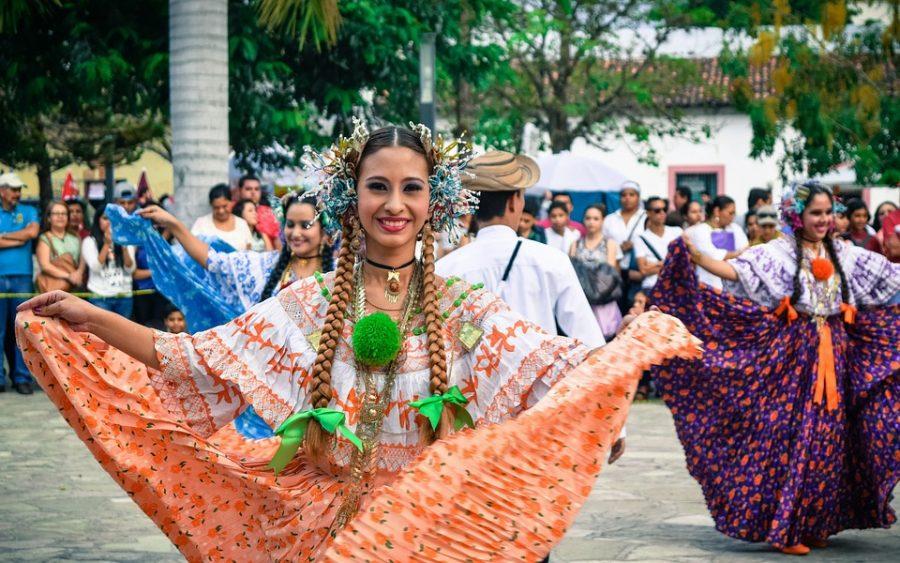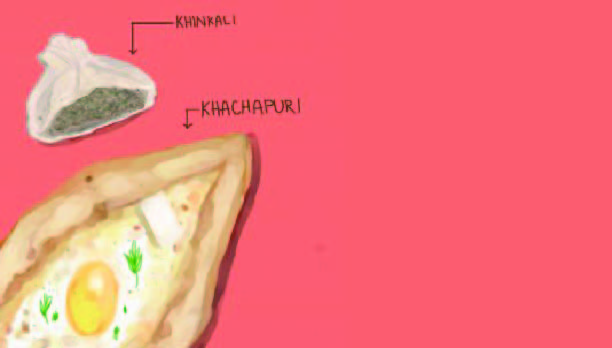I have countless memories of my scrawny eight-year-old self watching the travel channel classic, “Bizarre Foods With Andrew Zimmern,” eyes filled with wonder as I saw him consume plate after plate of endlessly interesting and unique food. Like many people my age, when I’m older and have the funds to do so, I want to travel all over the world. In fact, I’m rather jealous of those my age who’d need more than two hands to count the amount of countries they’ve traveled to and those who have their desks filled with countless memorabilia and trinkets from the places they’ve visited. But rather than the idea of being far away from home, I’m more interested about the plethora of new foods that people have access to when they travel.
In this blog, I will be interviewing people from Rock Bridge High School (located in the totally interesting state of Missouri) about the interesting gastronomy that they’ve encountered in their travels and attempt to make an illustration representative of the topics discussed.
First up is Emily Ma, a carnivorous junior who loves to travel and despises the idea of being a vegetarian.
When and where did you travel? How would you describe the experience?
“I visited Jeju Island, which is in South Korea, during spring break of 2017. My dad was on a business trip, so me and my mom just decided to tag along. It was a good experience and, while the food was really, really good, the island itself was more appealing than the food I had there. The really good food I had was in Seoul, not in Jeju Island.”
What type of food did you eat on this trip? Can you name a few dishes?
“Some dishes I had included bibimbap, a rice bowl topped with veggies and meat with a pretty, runny egg in the middle and jajangmyeon, which is this thick bean sauce that has pork and vegetables in it. The jajangmyeon is served with noodles and cucumbers.”
What was your favorite food that you encountered?
“While the jajangmyeon and the bibimbap were incredible, tteokbokki was my favorite. I ate tteokbokki at least once a day when I was in Korea. Tteokbokki is pretty much rice cake and fish cake that’s cooked in a gochujang sauce. Not only was it really cheap, it was everywhere.”
In general, how would you describe the food of the country you traveled to? (Or describe your first impressions).
“It’s all well-seasoned and somewhat spicy… definitely the spiciest of all of the East Asian food I’ve ever eaten.”
Had you experienced anything like it before you had your trip?
“Yeah … my Korean friend Yul made a lot of Korean food for us before the trip, and I’d eaten a lot of Korean food in the United States before. However, the food in Korea, obviously, was way better and cheaper. A good sized bowl of ddeokbokki in the US is one-third of the price in Korea. This was probably because tteokbokki is considered street food — the places where I bought it at weren’t by any means luxurious or in a traditional restaurant setting.”
_
After conducting my interview with Emily, I further researched the dishes we discussed. First of all, the Korean dish known as jajangmyeon actually traces its origins back to China. In the early 20th century, the dish became more popular and was adapted for the taste of Korean people. The history behind this brings light to the fact that when migrants arrive in foreign countries, their food is adapted to fit the tastes of the general populous of that country. While the results may be completely unauthentic, such interactions form tasty example of cultural diffusion.
With bibimbap and tteokbokki, gochujang is an important ingredient. Gochujang is a savory, spicy, fermented ingredient and condiment made from gochugaru, which is a chili powder. Gochujang is as essential to Korean cuisine as kimchi and is a staple in the average Korean kitchen. In tteokbokki, gochujang is the basis of the flavorful sauce that covers the rice cake and fish cake. In comparison, gochujang is simply used as a topping to eat with the various pickled vegetables, proteins and rice in the bibimbap.
Above is an illustration of the three dishes; tteokbokki, jajangmyeon and bibimbap.
LATEST NEWS
- Stress, anxiety skyrocket as students prepare for upcoming AP tests
- RBHS holds successful night of percussion
- Not even water?
- Solar eclipse to pass through Missouri, April 8
- How CPS is organized: a guide
- City of Columbia to hold school board election April 2
- Youth Election Participants to assist in upcoming municipal election
- City of Columbia hosts first Community Engagement Session for McKinney Building, hopes to gain public insight on the structure’s future
- RBHS Track Team Opener at Battle Gallery
- March Mathness Photo Gallery
Tasty Travels: South Korea
October 17, 2017
Leave a Comment
More to Discover
@2021 - www.bearingnews.org
































































































